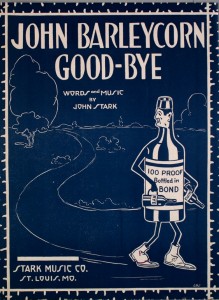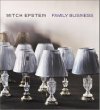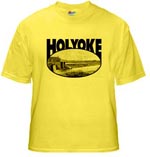by Laurel | January 17th, 2012
On 16 January 1919, having been approved by 36 states, the Eighteenth Amendment was ratified. However, it was not effected until January 17, 1920 — 92 years ago today –when the nation went “dry.” In Springfield, the title of this post was the headline in the paper where the effects on larger cities may be seen in the accompanying article. Springfield — at least in the paper — had little to say about the mourning of John Barleycorn (see first paragraph for the Springfield report) and no mention of Holyoke at all in the report of final pre-prohibition revelry.
17 January 1920
Little Moaning at the Bar
While the passing of licensed liquor was being observed with hilarious farewell rites in the large cities of the country last night, all was quiet here. The reason was ascribed to the public’s indifference to the fate of the late “John” and to the fact that hotels had “nothing to celebrate with.” There were, however, a few trails of irregular footprints on the snow about 12:01 a.m. today when the nation went dry. All the old liquor signs and advertisements had to come down at midnight. Long white tallow candles fitfully sputtering and faintly gleaming in the former barroom of the Highland Hotel about 8 last night gave the impression that the place was holding a wake, but only an electric fuse had burned out.
17 January 1920
Wildest Revelry Marks Finale in New York
While Thousands Gather at Churches for Prayer, Thousands More Quaff Last Drinks.
Gay White Way’s Freest Night Ever
Prohibition Enforcers Make No Interference With “Wake” — Elaborate Silver and Ebony Caskets in Some Restaurants.
New York, Jan. 16 — Demon rum was declared an outlaw in New York at midnight tonight, and the declaration was received in two widely different modes by New Yorkers. While many thousands gathered in the churches of the metropolis to greet with prayer and praise the official passing of the demon, more thousands expressed their feelings in a desperate attempt to consume as much of the forbidden liquor as their systems and pocketbook would permit.
Wild Night On White Way
The scenes of revelry in New York’s famous white light district surpassed, by common consent, anything previously known in the city. In every cafe, restaurant and hotel in the brilliantly lit heart of Manhattan “mourners” gathered for the “wake” in a spirit of hilarity that ought to have made the corpse wonder if it was a christening instead of a funeral. The evidences of mourning seemed to be entirely confined to the numerous coffins which decorated the centers of most of the cafes and resorts. These ranges from an elaborate silver and ebony casket which held the middle of the stage in one of the most widely known white-light restaurants, to modest, impromptu black boxes which were hastily constructed from soap boxes and a pot of paint in the more humble mourning places.
As the hour of midnight approached numerous funeral processions were formed and the various coffins were carried from place to place on the shoulders of such mourners whose grief had no incapacitated them from acting as bearers.
Enforcers Wink at Revelers
No attempt was made to interfere with the wake by the official prohibition enforcers. Col. Daniel L. Porter, who has charge of the enforcement in the New york district, announced early in the evening that while he was preparing for a vigorous campaign as soon as the 18th Amendment became operative, he had made no special arrangements to interfere with tonight’s mourners. Apparently emboldened by this knowledge, the cafe and restaurant proprietors showed little inclination to deprive their patrons of mourning material. It was merely a question of the price in most places, but a question with a very large capital Q as even the smallest libation to the departed cost from 75 cents to $1, while more ostentatious mourners found a $100 bill went but a short way for wine at $80 a bottle.
From The Springfield Republican, image from Johns Hopkins University, Levy Sheet Music Collection.









